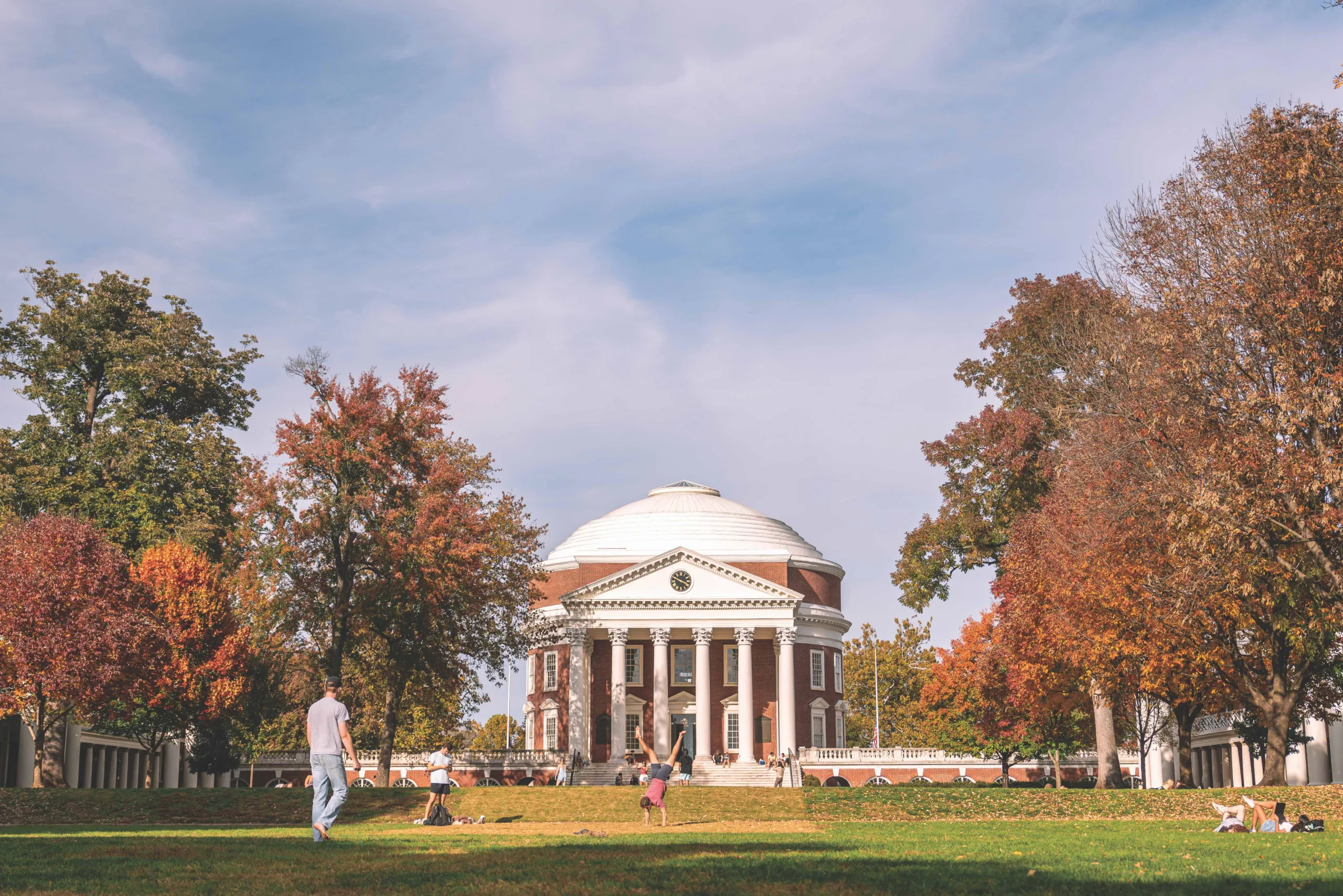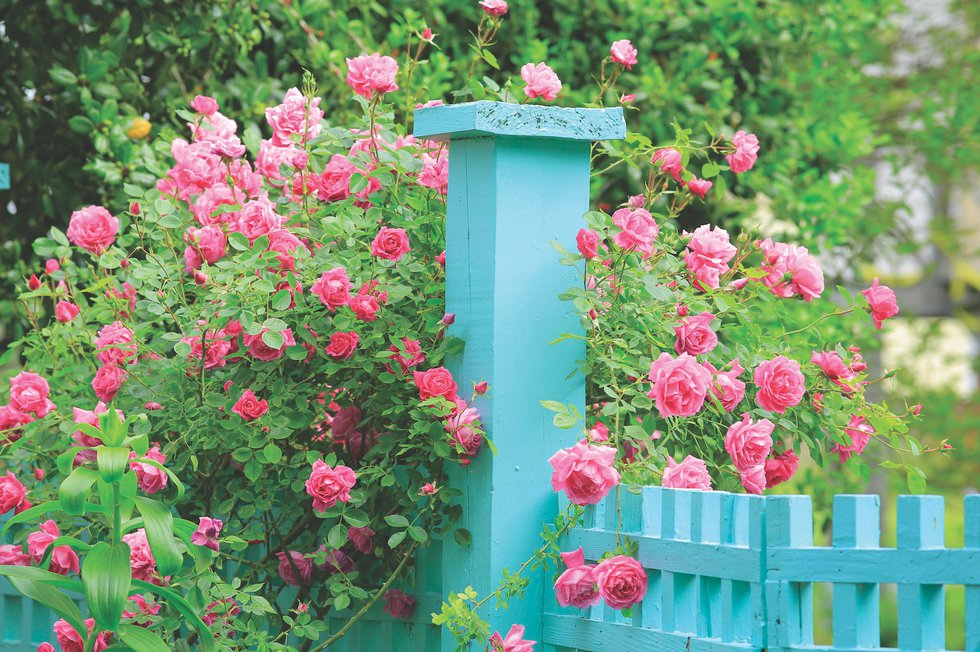A Charles Gillette garden remains the gold-standard in landscape design today, nearly 50 years after his death. A look at the man behind the aesthetic that is distinctly, delightfully, Virginia.

The Gilette Garden at Little Yatton in Orange.

The Frascati garden in Lexington.

Serpentine walls accent the lawn at Rivanna Farm.

Original drawing for the garden at Castle Hill.
He grew up in a Midwestern middle-class family: not poor, but often financially strapped. He had no college education, though his first professional job was as a teacher. He worked for a time on the staff of the Wisconsin Home for the Feeble-Minded, helping to care for the patients. From these inauspicious beginnings grew one of the finest 20th-century landscape designers, Charles Freeman Gillette.
During his 56-year career in Richmond, Gillette designed more than 2,500 gardens, forging a distinctive, timeless regional style that has come to be known as the Virginia Garden. He blended the traditional formal gardens of the 17th and early 18th centuries (think boxwood), the more naturalistic influences of the 18th-century English Landscape School and the colorful combinations of perennials, annuals, native plants, bulbs, trees and shrubs pioneered by designers such as Gertrude Jekyll of the Arts and Crafts movement in the late 19th-century. Today, he is still emulated by his successors, and his surviving gardens continue to reflect his singular mastery.
From a very young age, Gillette was passionate about plants. His father, Orlando Gillette, was a farmer and herbalist who was deeply knowledgeable about medicinal herbs. He often took Charles on his rounds to doctor the sick, sharing his plant knowledge and his understanding of the harmony within nature.Gillette’s sense of the importance of nature and plants to man’s well being was heightened during the time he worked in the mental institution. When he took patients for walks, he noticed that spending time outside soothed them. He knew then that he wanted to study gardening and to better understand man’s relationship to nature.
Gillette’s goal was realized in 1909 when, at age 23, he was accepted as an apprentice in the Boston office of Warren H. Manning, one of the most influential landscape architects of that time. Manning quickly recognized his protégé’s gifts both as a designer and a manager, and his ability to guide a client in the direction he wanted without seeming to impose his own taste and opinion. Within months of Gillette’s hiring, Manning asked him to supervise a major landscape project for Chelmsford, an estate in Greenwich, Connecticut, owned by Elon and Blanche Hooker. The Hookers would expose him to a level of style and sophistication that he hadn’t known growing up in Chippewa Falls, Wisconsin. (He maintained a close friendship with Blanche Hooker until her death, often returning to Chelmsford to offer advice on maintaining and refurbishing the grounds.)
Very soon after Gillette returned to the Boston office in 1911, Manning once again sent him away to manage an important project, this time to Virginia to oversee the landscaping of the campus of the newly founded University of Richmond. The following summer, the Hookers treated Gillette to a two-month grand tour of Ireland, England, France and Holland to further his professional studies. The trip was transformative for Gillette.
His extensive journals detail the impact European gardens had on the development of his personal landscape design style. The use of broadleaf evergreens at Ormeau Park in Belfast, Ireland, for instance, he wrote, was “very unusual, but a most delightful, cool and refreshing arrangement which might be used to good advantage in the South.” And he loved the cottage gardens near Stratford-on-Avon, where he discovered his “ideal herbaceous borders.” The 16th-century sunken pond gardens at Hampton Court Palace near London, too, made a lasting impression, inspiring his design of the sunken garden at Agecroft Hall, the Elizabethan manor house moved from England to Richmond’s Windsor Farms neighborhood in 1925.
A few months after returning from Europe, Gillette married Ellen Patterson Cogswell, and took his bride to Richmond, where he continued to supervise projects for Manning. By the time he was 33 years old, Gillette had opened his own business as a landscape architect.
In the early part of the 20th century, Richmond was ideal for a gifted young landscape architect. The city was finally in recovery from the depressed post-Civil War economy. The wealthy were moving northward to build grand homes on extensive grounds in the Ginter Park and Highland Park suburbs and creating estate properties in the countryside. During this time, known in America as the “Country Place Era,” Gillette took an eclectic approach to his designs, fitting the style to the house, the setting, and the lay of the land, always with regional overtones. Renaissance traditions informed much of his work, but with the added twist of 18th-century Virginia garden motifs. And he embraced influences of the English Landscape School, which idealized naturalistic landscapes. In the spirit of the Arts and Crafts movement, Gillette also created bountiful perennial borders as well as informal gardens, separated from the house and filled with wildflowers and native shrubs.
“Gillette was an extraordinary plantsman,” says Lori Frascati who, with her husband Craig has spent the past four years restoring a neglected Gillette garden in Lexington. In Richmond’s Library of Virginia, they were able to find the original planting plan drawn up by Gillette in 1959 for William and Mary Pusey. The garden, with 29 different genera, offers a long view from the entrance to a water feature on the far wall. The space is separated into three garden rooms, the middle with wide perennial borders. Dwarf boxwood provide a low-hedged frame, and a wide selection of perennials, including columbines, bellflowers, dianthus, peonies, delphinium, daylilies, chrysanthemums and clematis afford multi-season interest.
The sunken garden at Little Yatton in Orange is exemplary of Gillette’s ability to design an informal garden that merges with the surrounding countryside. For years, Gillette had been urging owners Dorothy and Wyatt Williams to have a garden in the front of their early 20th- century farmhouse. “There was a small garden behind,” said Mrs. Williams in 1994, “and Charles kept saying we should plant a garden in front, under our old tulip poplars.” Once they had an additional well to provide the required water, the Williamses embarked on the project.
The focal point is a reflecting pool surrounded by a path lined with indigenous wildflowers. A gazebo at one end anchors the design, a welcome sheltered spot to enjoy the reflections on the water. Visitors to Little Yatton (now owned by Eben Richards) look down on the sunken garden and across to the fields beyond.
Myra Brush, now in her 70s, daughter of Dr. Ned Brush, who commissioned Gillette to design his Lexington garden, remembers Gillette’s visits to their home, Castle Hill. “I was just a little girl, but I remember that Gillette would drop by and walk around the garden … He didn’t mind giving free advice. I remember one time Daddy was planning a patio with an outside fireplace. He showed Mr. Gillette where he was going to put it, pointing out the lovely view. Gillette told Daddy he might like the view, but he wouldn’t enjoy being near the neighbor’s pigpen. Gillette found a new location with an even better view. It meant more digging out of the mountain, but it was a much better spot.”
This article originally appeared in our Oct. 2014 issue.









